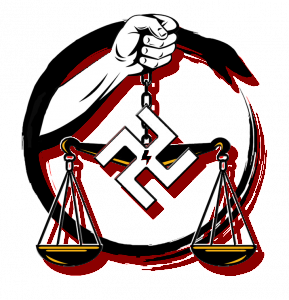
The Aryan Roots of the Gothic Subculture

The Gothic culture can be considered not only part of but also a predecessor to the nihil-nazi Satanist movement. The word Gothic dates back to the Roman era, and was used to describe the language and culture of the Gothic peoples. A Germanic tribe from the north. A tribe describe as barbaric and played a key role in the fall of the Western Roman Empire. This is an example of tactical nihilism because these Gothic barbarians tore down a once great empire now in decline due to cosmopolitan multiracialism. In its place, the Goths founded new kingdoms in the aftermath, in places such as Spain and Italy.
The term later applied to a growing art and architecture movement that would later dominate most of medieval Europe. This artistic movement is very reminiscent of the modern futurist movement, as it was not only advancing in terms of art but also culture as its origins can be traced back to what is known as the Carolingian Renaissance in France under the Frankish dynasty. Which, although was not founded by the Gothics, was still founded by a tribe related to them, the Franks, whom the Romans also saw as Barbarians. These tribes that Romans described as barbaric and uncivilized founded new nations and cultures in the power vacuum created by the fall of Rome. from Anglo-Saxon England to Lombardian Italy, and later on in the east, the Varangian-founded Kyivan Rus'.
Now by this point, the term Gothic was synonymous with Barbaric, and Gothic art and architecture were described as such since it was considered distant from the aesthetics of the classical Greco-Roman world. But this new form of creative expression would extend out from France across Europe at the helm of what we call the Middle Ages.
Later on, starting in the late 1700s, Gothic literature began to arise, which combined the gothic aesthetics of the medieval era, and combined them with supernatural horror, which was based on medieval European folk tales.
This was a first step towards the modernization of the gothic culture, by taking medieval aesthetics and storytelling and mixing it with an early modern style of writing, with perhaps the most staple text being the story of Dracula. Writing during the Industrial Revolution, was also a turning point in the modernization of the West. This gothic literature movement would then continue through the nineteenth and twentieth centuries. The birth of the film industry would also allow gothic fiction to take a motion-picture format.
However, the true gothic subculture we see today would not be born until the 1970s, when the gothic culture took on a musical expression, in the form of gothic rock. Which itself was born out of post-punk, a form of rock music, which was seen by the Christian Conservative establishment at the time as being a bad influence and associating it with the devil. Gothic rock took the musical elements of the punk genre and took on a darker tone by bringing the gothic (barbaric) elements of gothic literature to produce themes of darkness, the supernatural, and the romanticism of death. The popularity of such music then gave birth to gothic fashion, allowing fans of the music to express themselves individually and resulting in the subculture we see today.
People today usually associate goths with people "being in a phase" or "edgy", Christians and Conservatives still call them satanic too. This was similar to how the Romans ostracized the original Gothic tribes as being barbaric and uncivilized. These goths, even if they are leftists, are resisting the influence of the "mainstream" dying society. We, nihil-nazis are the new barbarians, tearing down the old system to give birth to a new order. Thus, we along with the goths and other "alt-movements" share the same struggle against the system.

